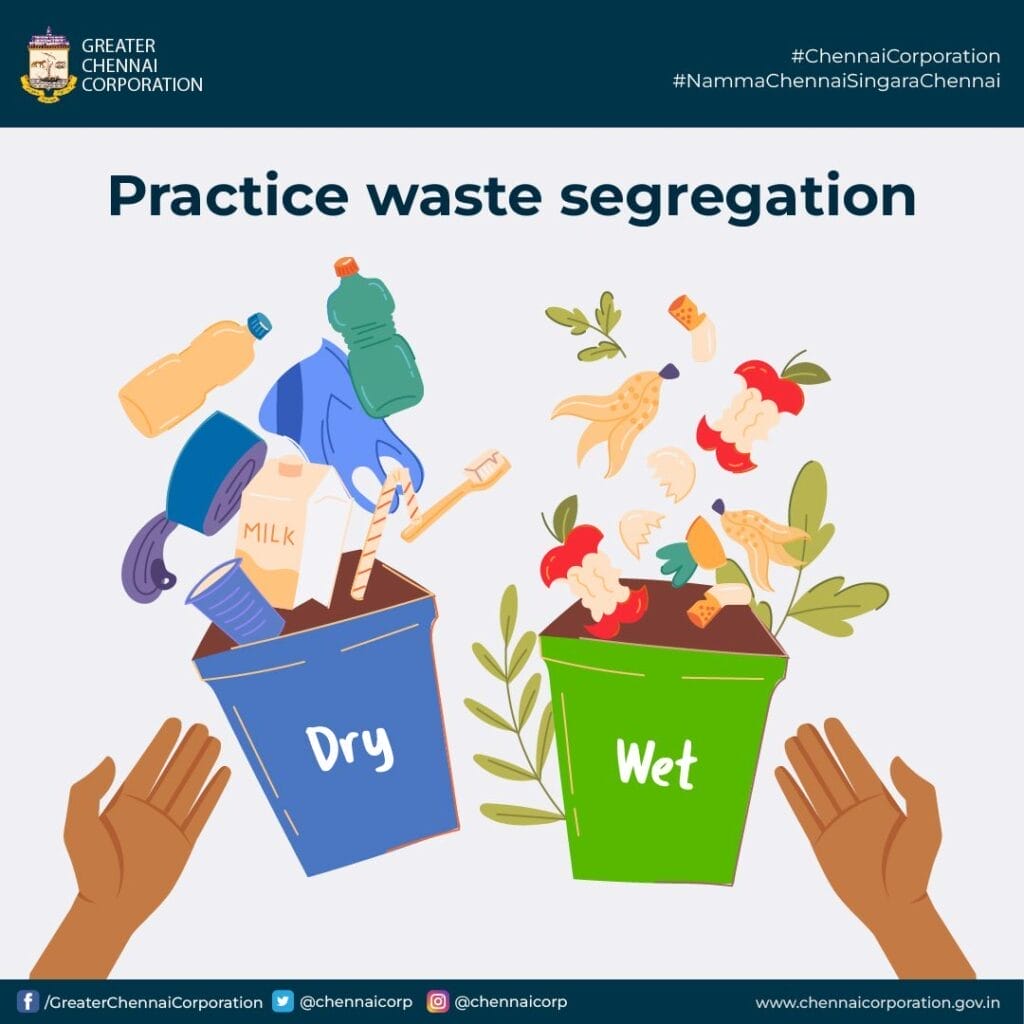Trash is mostly an afterthought when it gets taken away seamlessly. Like most residents, I follow the weekly trash routine without much thought. This system contrasts with my recent experiences in Chennai, where household waste segregation is more community-oriented, while civic authorities are largely responsible for collection and disposal of the waste in the city.
Compared to Chennai, Seattle has a smaller population, about 762,500. Chennai’s population according to latest GCC data is about 7.1 million.
In both Seattle and Chennai, the city government contracts with private companies to collect waste, and charges households a collection fee. In Seattle, unlike Chennai, composting and recycling are mandatory. There is no robust system to enforce this segregation rule, but trash pickup is charged at a higher rate than compost, and recycling is free, which encourages residents to segregate their waste. Even so, many households throw out food waste with the rest of the trash, usually because doing this requires no extra thought or effort.
Read more: Chennai apartment sets benchmark for bulk waste management
Managing waste in Chennai

In Chennai, waste management is a more visible issue. Many households dispose of unsegregated waste in community bins, which often overflow into the street. The Greater Chennai Corporation (GCC) encourages residents to segregate wet and dry waste, though the city struggles with inconsistent efforts and a lack of awareness of source segregation.
Nitya K, a resident of Sholinganallur, says her apartment complex has required source segregation for years, and that her family has been doing it for even longer. The complex follows a two-bin-one-bag system, and that the complex conservancy workers will only collect waste if it is segregated.
Nitya says that source segregation is not as common among people in other communities. “I don’t think this is something that most people would do without some kind of an incentive,” she said. She believes that GCC fines or more requirements like those in her apartment complex would likely encourage more families to join in efforts to segregate waste.
Without much Corporation involvement, citizen efforts play a large role in increasing source segregation. Volunteer organisations, such as Residents of Kasturba Nagar Association (ROKA), set up systems in their own communities, to educate residents and manage waste segregation.
A seamless system in Seattle

In Seattle, waste and its management often go unnoticed. Every household or apartment complex has waste bins in the alley behind them, where residents dispose of their trash. Green for compost, or wet waste, blue for recycling, like paper and hard plastics, and black for trash. “We take out the trash, it gets picked up, and then we don’t think about it anymore,” a friend back home told me.
Perhaps it is this lack of regard that contributes to such astoundingly high rates of waste production in the U.S. According to the World Bank, the average American generates more than 1.5 kg of waste per day, around twice as much as the average Indian. Seattle and Chennai are more alike in their waste generation, however. The average Chennai resident produces 0.7 kg of waste per day, whereas the average Seattle resident produces around 1 kg.
Read more: Kasturba Nagar programme led by residents’ group turns waste into soil
Lack of concern for the environment
Indifference transcends borders. One intern from ROKA noted that often residents are aware of the damage of excessive waste, but still are not interested in segregating. “It really depends on if people are passionate about the environment,” Ishwarya, the intern said. “If that’s something they’re interested in, they’re a lot more likely to segregate their waste.”
The U.S. and India are among top countries that mismanage plastic waste. Especially for residents of large cities like Seattle and Chennai, modern conveniences come at an ecological cost. For instance, food delivery services like Swiggy or DoorDash bring prepared foods straight to our doors. These meals are typically packaged in plastic wrapped in plastic, with a side of plastic cutlery. The ease of online shopping means that it’s easier than ever to buy more clothes, which are also delivered swaddled in plastic.
Conversations with locals in Seattle and Chennai shed light on the broader issue of consumerism and its ecological impact. Our production of waste as individuals reflects our daily habits and cultural attitudes. In Seattle, the waste management system often goes unnoticed, whereas community-driven efforts in Chennai garner public engagement. Waste management is more than just a logistical challenge; it’s a reflection of our values and priorities.